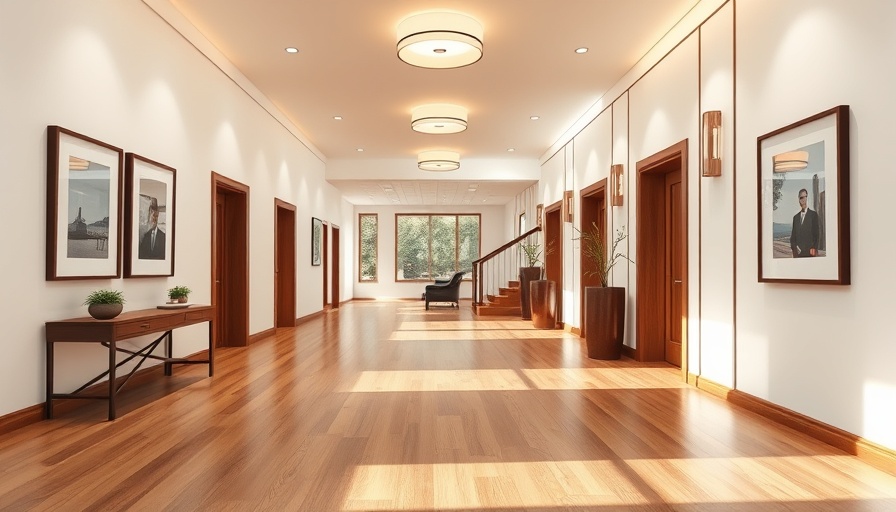
Why Proper Lighting is Essential for Commercial Spaces
In the world of commercial design, the nuances of interior lighting can often be overlooked, yet they are critical in enhancing the functionality and aesthetic value of a space. Poorly designed lighting not only detracts from the intended design of the space, but can also impact the mood and productivity of those who use it. As highlighted in the insightful guide on interior lighting layout, understanding the psychology of light and its placement is a key consideration for business owners, property developers, and facility managers.
Understanding Lighting Techniques: Transforming Spaces
The guide categorizes lighting into four fundamental methods: Direct, Indirect, Direct-Indirect, and Diffuse lighting, each serving a unique purpose in room design. For instance, while direct lighting creates a focused environment that is excellent for task areas, indirect lighting generally enhances atmospheric comfort—vital in settings like open offices and public spaces where relaxation and productivity coexist.
For facility managers looking to improve workspace optimization, the right lighting can enhance employee satisfaction and fall in line with health-conscious practices, which are becoming predominant in modern design standards. As Carlos Martinez, an expert in the design of commercial spaces, discusses, implementing techniques such as indirect lighting can create open, inviting areas that benefit both workers and visitors alike.
The Critical Difference: Direct vs. Perimeter Lighting
The unfortunate truth is that many commercial spaces suffer from a severe underestimation of how lighting placement impacts usability. Traditional designs often focus heavily on direct lighting, leading to troublesome glare and stark contrasts that can feel harsh. Understanding the distinction between direct and perimeter lighting can transform a space from uninviting to welcoming.
Efforts to enhance lighting design don't have to come with a hefty financial burden. By re-evaluating existing light placements and considering methods that blend various lighting techniques, businesses can not only reduce costs but also elevate their branding and overall customer experience. This adjustment can yield a significant return on investment, especially in high-traffic areas.
Future Predictions for Lighting Design Trends
The future is bright for commercial lighting design. As sustainability becomes increasingly central to construction and design, the market will likely see innovations such as integrated smart lighting systems that adjust based on the time of day or occupancy. These systems not only enhance the usability of a space but also align with eco-friendly practices, allowing businesses to contribute to a healthier planet while appealing to socially conscious customers.
The implementation of mood-enhancing lighting in communal areas within workplaces can also become a trend. Such designs will create spaces that empower employees to feel comfortable and productive, further promoting the case for investments in thoughtful design.
Actionable Insights for Optimal Lighting
Understanding how to create an effective lighting layout is vital for anyone involved in commercial spaces. For business owners and property developers, consider the following actionable insights:
- Conduct a lighting audit to assess the effectiveness of current installations vs. planned architectural changes.
- Explore lighting layers that incorporate task, ambient, and accent lights to create dynamic spaces.
- Stay informed on sustainable lighting technologies that can reduce overhead while enhancing design.
By embracing these practices, commercial spaces can move beyond mere functionality to foster environments that nurture well-being and productivity, a crucial investment as the future of work continues to evolve.
Conclusion: Why You Should Review Your Business Lighting
If you’re a business owner or facility manager, the time to review your interior lighting design is now. Proper lighting isn’t just about aesthetics; it plays a crucial role in establishing a space that enhances employee satisfaction and optimizes operational efficiency. By adopting these insights, you're not only investing in your business's future but also contributing to a more pleasant and productive environment. Engage with lighting professionals to rethink your current installations and unlock the full potential of your space.
 Add Row
Add Row  Add
Add 




Write A Comment